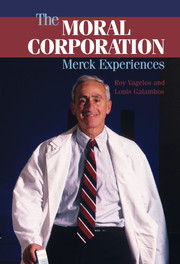3 - Turn Around
Published online by Cambridge University Press: 05 June 2012
Summary
My second experience turning around an organization was a substantially more difficult job in a setting that was new to me. Many of the ideas and values that I had accumulated over the years were useful, but when Merck & Co., Inc., offered me a job in November 1974, I knew very little about the pharmaceutical business and virtually nothing about the American business system. I certainly didn't know whether I could lead Merck Research Laboratories (MRL) to a medicine that would cure or prevent a disease.
But I was convinced that, if the company improved the quality of its research and MRL's strategy for drug discovery, it would have a much better chance of someday developing new therapies that would really make a difference. That was the hook for me – believing I could have a positive impact on the company's ability to reach that laudable goal. After our customary, extended family discussion, Diana and I agreed that we should accept this new offer, frame a new ten-year plan, and move our growing family (now including Andrew and Ellen) back East to New Jersey.
The truth is that when we decided to accept the company's offer, I didn't know everything Merck was doing. The company had twenty-six plants in the United States and thirty-nine overseas. Over 26,000 employees were developing, producing, and distributing prescription drugs, specialty chemicals, and animal health and environmental products. I knew nothing about subsidiaries like the Calgon Corporation and the Baltimore Aircoil Company. Instead, I was armed with an impressionistic blend of Rahway memories, family lore, and recent personal encounters.
- Type
- Chapter
- Information
- The Moral CorporationMerck Experiences, pp. 25 - 48Publisher: Cambridge University PressPrint publication year: 2006

